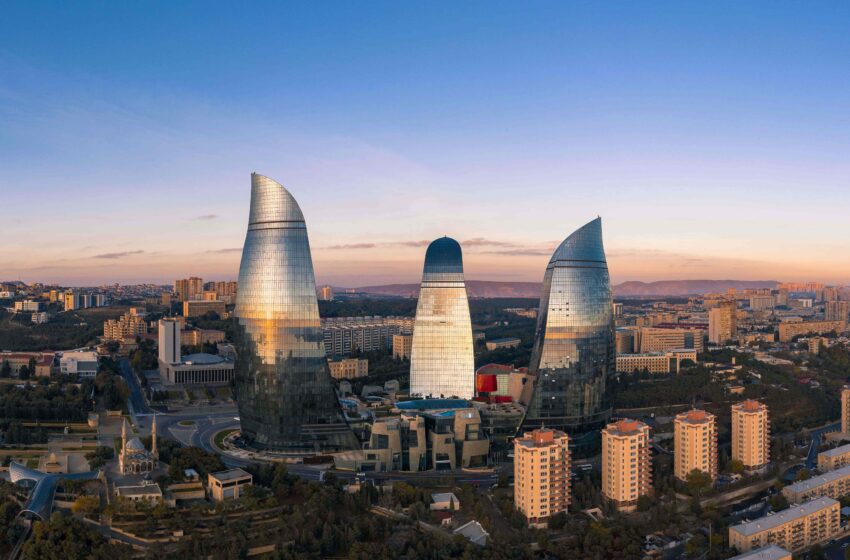
Azerbaijan’s Only Travel Guide You Need For A Great Trip in 11 Easy Steps
- Destinations Asia
Cruisit Team
- May 7, 2022
- 0
- 4638
- 71 minutes read
Azerbaijan’s Background
Azerbaijan, a Turkic country with a Muslim majority, acquired independence after the Soviet Union collapsed in 1991. Despite a 1994 cease-fire, Azerbaijan has yet to resolve its dispute with Armenia over the Azerbaijani enclave of Nagorno-Karabakh (largely Armenian populated). As a result of the conflict, Azerbaijan has lost 16% of its land and is responsible for 571,000 displaced people. Corruption is rampant, and the promise of universal prosperity from Azerbaijan’s untapped petroleum resources has yet to be realized.
A country in the South Caucasus, situated at the meeting point of Western Asia and Eastern Europe. The Caspian Sea borders it on the east. Russia to the north, Armenia to the west, Georgia to the northwest, and Iran to the south are its neighbors. Azerbaijan is the region’s youngest republic. In 1918, the Azerbaijan Democratic Republic declared independence. It was absorbed by the Soviet Union two years later. Azerbaijan declared its independence for the second time in 1991.
The people of, Azeris, and the country have a very rich history. Azerbaijani Turks were nomadic tribes of Shi’i Muslims who lived in the land of present Azerbaijan, according to global history. For millennia, Azeri had no statehood. Muslim Arabs, Kurds, Seljuk Turks, and others conquered and governed the country. Iran held the territory until the Russian Empire established its authority in the region in the nineteenth century. Azerbaijan was formed as a result of the fall of the Russian Empire.
Azerbaijan’s most valuable commodity is oil. The major oil-producing regions are not distant from Baku, which is why the metropolis was quickly dubbed “Black Gold Capital.” Let us bypass the nuances of oil production and its history and just state that oil and gas have become a ticket to the global market, transforming Azerbaijan into a strong, powerful, and, of course, wealthy nation. The government invests heavily in the growth of all sectors, particularly tourism.
“The history of the Land of Fire’s nomadic origins, its involvement with the Soviet to its newly found prosperity and its unfrequented fertile grounds; Azerbaijan stands out with its beauty.“
Despite the fact that Azerbaijan has few historical sites, the country’s natural beauty makes it an appealing tourist destination. Baku, Azerbaijan’s capital, is the most appealing destination. The city combines traditional Caucasus customs, drab industrial life, and contemporary technology. The city’s tourism hub is Icheri Sheher’s old town, which has medieval relics like as the Maiden’s Tower and the Palace of Shirvanshahs. The city boulevard is one of Baku’s most gorgeous areas. In the evening, it is lighted by hundreds of city lights, with the Flame Towers visible in the distance.
Although it may not look so at first glance, Baku is a varied city. The country’s past is incredibly intriguing and helps to explain why there is variety in Azerbaijan now.
Azerbaijan (Azrbaycan), known as the “Land of Fire,” is a labyrinth of paradoxes and contrasts. It is neither Europe nor Asia, but it is a crossroads of great historical empires as well as a ‘new’ nation that has seen an incredible change from the war-ravaged post-Soviet 1990s to an oil-rich home of Formula 1 and Europa League football.
Baku, the Caspian Sea’s cosmopolitan metropolis, encircles a UNESCO-listed historic center with magnificent 21st-century architecture. Mud volcanoes and strange fire occurrences can be seen in the adjacent semi-desert. Yet, only three hours away, timeless rural towns nestle among lush orchards and the majestic Great Caucasus Mountains.
After years of being disregarded by visitors, Azerbaijan’s relatively simple visas, low-cost hotels, and densely packed range of gorgeous landscapes are beginning to attract large amounts of tourists, but few from Western nations. Do visit quickly before it gets flooded with tourists.
- Admire the Maiden Tower, a UNESCO World Heritage Site dating from the 12th century.
- Explore the rock engravings at Qobustan National Park that date back thousands of years.
- Visit the courtyard of Surakhani Fire Temple, a historic Silk Road stop.
- Visit the old city ruins of Qabala.
- Explore Göygöl National Park’s lovely lake.
- Yarndag’s blazing mountain contains a slice of hell.
- See Yanar Bulag’s scorching water.
- In Xinaliq, you may experience Azerbaijan’s secluded and original culture.
- Learn why Azerbaijan is called the land of fire
- If you want to stay in Azerbaijan for longer than 10 days, you must register with the State Migration Service. Failure to comply will result in a large fine.
- The Baku City Pass includes free museum admission, metro tickets, hop-on/hop-off bus journeys, and discounts at many Baku eateries.
- Of course, be wary of taxi frauds at the airport.
- If you’re on a low budget, Baku’s capital features excellent local transportation.
- Azerbaijan, particularly Baku, is pristine, so don’t trash or you’ll get fined again.
- Maintain your passport in a safe place at all times.
- If you want to take buses while in Baku, get a BakKart from the station.
- Azerbaijan’s primary language is Azerbaijani. However, Russian is widely spoken in Baku, and English is also widely understood.
- Azerbaijan offers an eVisa program that streamlines the visa procedure for many nations. Before going, make sure you are qualified for an eVisa. The eVisa is around $20.
Crime & Scams
Baku is relatively secure for tourists who keep to themselves and stay out of trouble. Many tourists never feel unsafe in Baku or the rest of Azerbaijan. However, scams exist, and you must be aware of what they are and how to avoid them.
SIM card frauds exist, therefore only buy from approved (official) retailers. Another prevalent scam in Azerbaijan is being billed for items you did not receive, which happens frequently at restaurants or other facilities where visitors are taken advantage of, so be vigilant and cautious. Another popular scam involves trains, where you may be pressured into paying more for beverages or items that the attendants claim you broke or lost.
Pickpocketing occurs in Azerbaijan, therefore be cautious in metros and tourist locations. Better keep anything precious close to you and out of easy reach.
The worst of them all, and it appears to be a global phenomenon (except in a few countries), is the airport taxi scam, which may be avoided by booking Uber, pre-booking a private car, or If you rent a car, you won’t have to deal with this.
However, if you are a journalist or blogger, you must use caution. Azerbaijan rates poorly in terms of press freedom, which is not anything you should be concerned about.
Health
Azerbaijan’s private health care system provides significantly superior medical treatment, with top-tier medical experts and cutting-edge medical equipment. Private hospitals and clinics have lately expanded around Baku, giving visitors to the city even more medical alternatives.
However, it is strongly advised that you obtain travel insurance before visiting Azerbaijan. While the nation is quite secure, you never know what type of pickle you may find yourself into anyplace, so it is always best to be careful than sorry!
Shoulder Seasons
The months of April to June and September to October are ideal for visiting Azerbaijan since they escape the 40°C summers and sub-zero winters, especially in the highlands. Prices are lower, and there aren’t as many tourists as during the peak season.
High (Peak) Season
The months of June to August have the fewest rainfall, with 1 to 2 days of precipitation each month, and are the busiest for tourists in Azerbaijan, therefore housing and other accommodations may be more expensive than usual.
Off-Season
The winter season lasts from late November until late March, with daily maximum temperatures averaging less than 11°C. The coldest month in Baku is January, with an average low of 0°C and a high nearing 7°C. Winter is considered the off-season or low season, when there are fewer tourists and costs are lowest.
If you enjoy the outdoors and want to take advantage of many of the fantastic Baku day excursions available, you should go in the spring, summer, or fall.
If you’re looking for a cultural experience, visiting Baku in the winter is still a good option because you can always dine and visit museums! However, many people visit Baku for events. These are most common in the spring and summer.
By Plane
Azerbaijan Airlines is the major airline that travels to Azerbaijan directly. The airline flies to Azerbaijan on a regular basis from Ankara, Paris, Barcelona, London, Milan, Moscow, New York, Tehran, and Dubai. British Airways also offers nonstop service from London to Baku.
By Train
The most convenient method to get from Baku to Tbilisi is via rail. Azerbaijan is connected to Tbilisi, Georgia, by an overnight sleeper train that departs every night from the Georgian capital; the journey takes 18 hours. Tickets should be purchased at the Tbilisi train station.
Every evening at 8:35, the train departs Tbilisi and arrives in Baku at 8:50 in the morning. A ticket may be purchased at the Tbilisi Railway Station for roughly 80 GEL for a first-class sleeper, around 50 GEL for a second-class sleeper, and almost 30 GEL for a third-class sleeper. Train schedules are generally similar whether you visit Tbilisi in winter or summer.
Overland By Car
Foreigners are now restricted from traveling to and from Russia by road due to security concerns in Dagestan and Chechnya. Due to continued tensions between the two nations, the border with Armenia is blocked. The most common road route is from Tbilisi, Georgia, through Lagodekhi and Balakan. Astara is the most convenient border crossing from Iran.
By Bus
Long-distance bus routes from Istanbul and other Turkish cities arrive in Baku, eventually (by changing in Georgia). The same regulations that apply to anyone crossing the border by car apply here. The majority of the roads are closed, with only transit through Georgia still available.
By Plane
Baku’s Heydar Aliyev International Airport is a short drive from the center and serves as Azerbaijan’s major air hub, along with five other international airports. Azerbaijan Airlines, the country’s official airline, serves the airport, which connects Baku to destinations throughout Europe, the Middle East, and Asia. Azerbaijan Airlines offers numerous flights each day between Baku and Nakhchivan, an Azeri ‘exclave’ blocked off from the rest of Azerbaijan by Armenia. Baku additionally has links to Ganja, Gabala, Yevlakh, Zaqatala, and Lankaran.
Although the distances look low on the map, plane travel saves many hours over driving. Short-notice tickets are commonly available throughout the year, with the exception of national holidays when many Baku locals visit their families.
By Train
Rail connections could be too slow, but fares are quite inexpensive, which makes up for the inconvenience. From Baku, the primary roads are northwest to the Georgian border and the Caucasus Mountains, and south to Astara and Iran. Azerbaijan has a well-developed rail network that connects Baku to other major cities and regional neighbors such as Kars in Turkey and Tbilisi in Georgia.
While train services are not noted for their efficiency, they are undergoing extensive renovations. Baku Central Station, Azerbaijan’s rail transportation hub, has recently been refurbished and now features modern amenities such as a shopping and dining area.
By Car
Renting a car may go a long way toward providing you the flexibility to explore what the nation has to offer, and it’s rather simple. This is also an excellent alternative during the hot summer months, since you can easily turn up the AC as needed. If your major concern is comfort, this is the ideal option for you.
However, because of the country’s recent success, the roads are overcrowded with automobiles that practically surpass their capacity, although new motorways are being built. Another thing to bear in mind, and something that reminds us of Egypt, is that most drivers do not follow traffic regulations, and nearly half of all drivers have not undergone a driver’s test and only obtained their license through “connection”.
As a result, it goes without saying that driving in Azerbaijan is only suggested for experienced drivers. If that describes you, then enjoy the independence of exploring natural beauty destinations that no one else has easy access to.
There are several international automobile rental companies, like Hertz and Avis, as well as many local firms in downtown Baku. You must be at least 21 years old and hold an international driver’s license.
Be aware that road conditions away from Baku are frequently bad, and four-wheel-drive cars are needed for mountain trips. Outside of big cities, roads are rarely illuminated.
By Taxi
Taxis are widespread in both urban and rural regions. Before leaving, agree on a fee; meters are not generally utilized, and the proposed charges may be excessive. Taxis are frequently available for a day’s sightseeing at pricing close to self-drive. Drivers are normally competent, but they have a habit of driving dangerously fast.
They are also readily accessible in large metropolitan areas. Because they are not usually metered, we recommend negotiating the fee before going on a ride. In Baku, the state-owned Baku Taxi Service operates a metered taxi cab fleet.
By Bus
Most cities in Azerbaijan are served by buses, coaches, and minibusses, as are cities in neighboring Georgia, Turkey, Iran, and Russia.
In Baku, both public and private buses operate. Buses to the suburbs are reasonably inexpensive but frequently packed, whereas private services are more costly but also more pleasant. In most cases, tickets may be purchased straight from the bus driver.
By Metro
Baku Metro links the central city to the outskirts and is relatively well maintained, clean, and efficient. It is the most affordable way to move about Baku, and tickets are administered via a smart card system known as BakKART or BakuCard. Expats can purchase metro cards at metro station ticket desks. To ride the metro without a token, visit a ticket window at a metro station. Security is usually rather tight at and around train stations, and it is not uncommon for security officers to examine luggage.
Azercell customers can get a $9 visitor package. This visitor plan includes 10GB of data as well as some talk time. Bakcell and Nar Movile are two additional operators with comparable prices to Azercell. In many tourists’ experiences, Azercell offers the finest coverage. There are two other operators, Sazz and Baktelecom, which do not have as much coverage as the preceding carriers. Just make sure you are in an official store so as to not be scammed like many tourists.
You also have the option of purchasing a prepaid eSim card like from Airalo, SimCorner, or Nomad. The companies provide data-only plans to put on a phone that is eSim ready, so make sure your phone is compatible. It is also possible to opt-in for a WiFi Hotspot from Solis. Check before you travel because they service certain destinations. Airalo by far has the most coverage of almost 180 countries.
Local Internet & WiFi
Wifi is fairly reliable in Baku. Many hostels and hotels have excellent wifi connections, which are above average in many other businesses around the nation.
Top Places in Azerbaijan
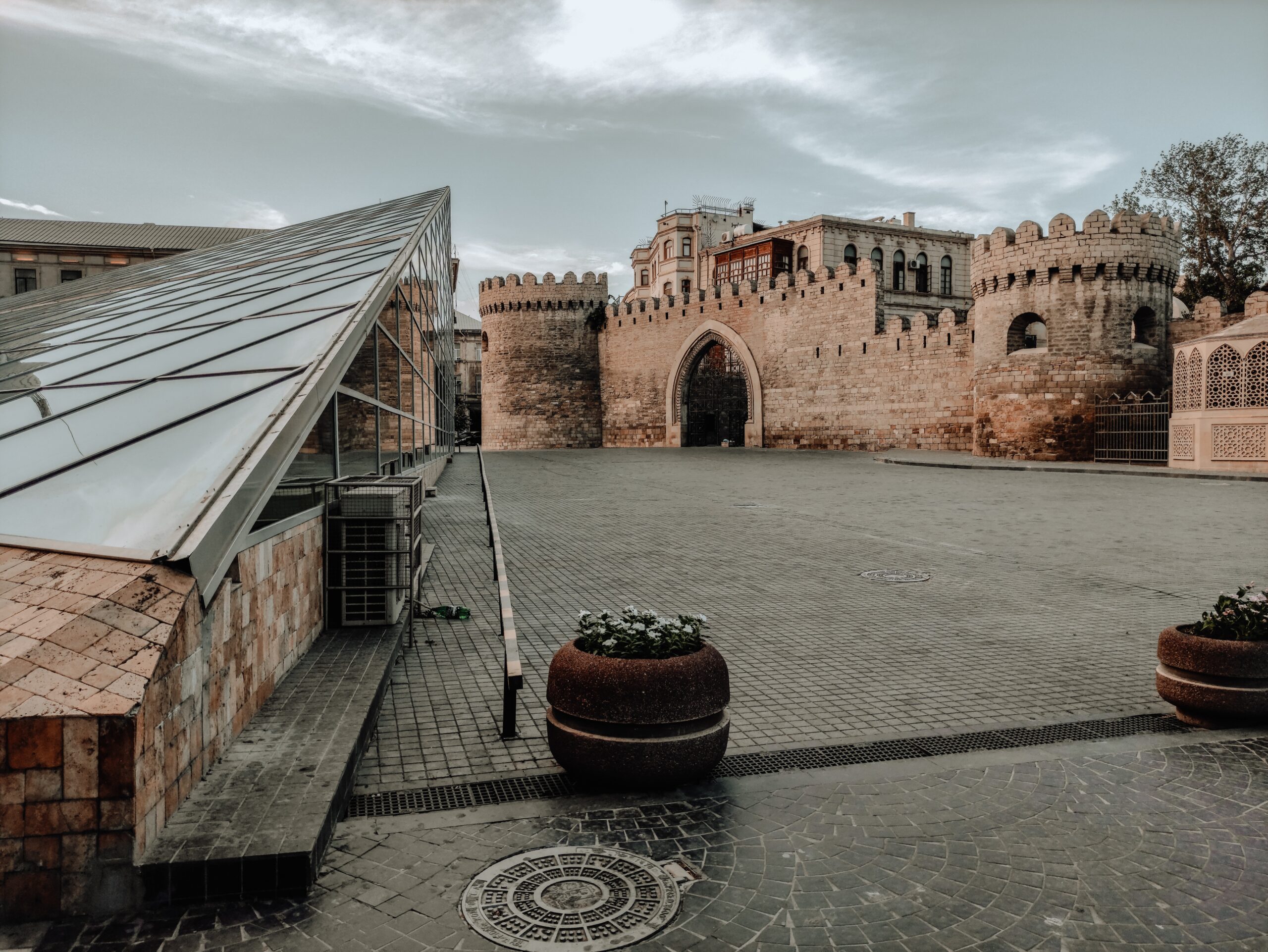
Icherisheher
The historical center of Baku, Azerbaijan’s city, is known as the Old City or Inner City. The Old City is the most ancient area of Baku, and it is encircled by fortified walls. The Old City had a population of around 3000 persons in the early 2000s. The Old City of Baku, featuring the Palace of the Shirvanshahs and the Maiden Tower, was designated as the first UNESCO World Heritage Site in Azerbaijan in December 2000.
Maiden Tower
The Maiden Tower is a 12th-century landmark in Baku, Azerbaijan’s Old City. It, together with Shirvanshahs’ Palace, is part of a complex of historic sites classified as cultural property, Category III, on the UNESCO World Heritage List of Historical Monuments in 2001. It holds a museum that tells the tale of Baku’s historical growth. The view from the roof includes the ancient city’s streets and minarets, Isa bek Hajinski’s mansion, Baku Boulevard, and a panoramic view of Baku Bay.


Yanar Dagh
Yanar Dagh is a natural gas flame that burns constantly on a hillside on the Caspian Sea’s Absheron Peninsula near Baku, Azerbaijan. Flames shoot 3 meters into the air from a thin, permeable sandstone layer. There is no mud or liquid seepage, which sets it apart from the neighboring mud volcanoes of Lokbatan and Gobustan. In the first millennium BCE, fire served as a link between people and the supernatural worlds in the Zoroastrian faith.
Gobustan
Gobustan State Historical and Art Reserve is a one-of-a-kind location on the planet. Gobustan, located near the contemporary metropolis of Baku, will transport you far away from the modern world; just an hour’s drive from the capital city, you will find yourself in a different time and space. It is well-known for its ancient sculptures, cave paintings, mud volcanoes, and gas stones. Imagine 537 acres of ancient living; this excursion is quite captivating. Gobustan was also included in the UNESCO World Heritage list in 2007, therefore it is unquestionably a must-see destination. From the Stone Age until the Middle Ages. Approximately 6,000 rock carvings, paintings, and petroglyphs depict 40,000 years of ancient life and rock art.


İmamzadeh İbrahim
The Imamzadeh Mausoleum, also known as the Goy Imam Mosque, is located 7 kilometers north of Ganja. It is a compound comprised of walls with entrances, modest mosques, and burial monuments. The mausoleum, which is housed within the mosque, contains the burial of one of Imam Muhammad al-Baqir, the fifth Imam of Shi’a Muslims.
Ibrahim bin Muhammad Al Baqir is the fifth imam of the Shia faith, a prominent Sunni scholar, and a direct descendant of the prophet. His son Ibrahim’s grave is claimed to be here, and many tourists come to pray.
7-day Itinerary in Azerbaijan (with extension options)
Day 1
Arrival at Baku and sightseeing
Heydar Aliyev International Airport in Baku is where you will land. To get to the city, take one of the black cabs (make sure you haggle the price), get an Uber, or a bus, which stops at the 28 May tube station. Every 30 minutes, an express bus travels for AZN1.30 ($0.80). You must purchase a BakiKart at the terminal machine and hand it to the driver when you enter.
Based on when you arrive in Baku, your first priority may be sightseeing or eating. Visit Maiden Tower then head to the Palace of the Shirvanshahs, and wander around the fortress walls at Icheri Sheher, the 15th-century and historical core known as Old City or Ancient Town. If you are hungry, there are various traditional eateries in the old town area as well as foreign restaurants on Fountain Square.


If you have the time you should also consider strolling along the promenade, Baku Boulevard, which was built in 1909 and extends around 5km (3 miles). When you are done take a ride on the funicular to Martyrs Alley, a memorial for those who were killed by the Soviet and in remembrance to the ones who died an Eternal Flame with constant fire is lit. The magnificent architecture of the monument is something to keep you in awe.
From the top, you can see magnificent city vistas. If you have extra time, you may take a cruise on the Caspian Sea. Shop along Nizami Street and admire the late-nineteenth-century architecture, picture the Flame Towers both day and night, and marvel at the futurist Heydar Aliyev Centre.

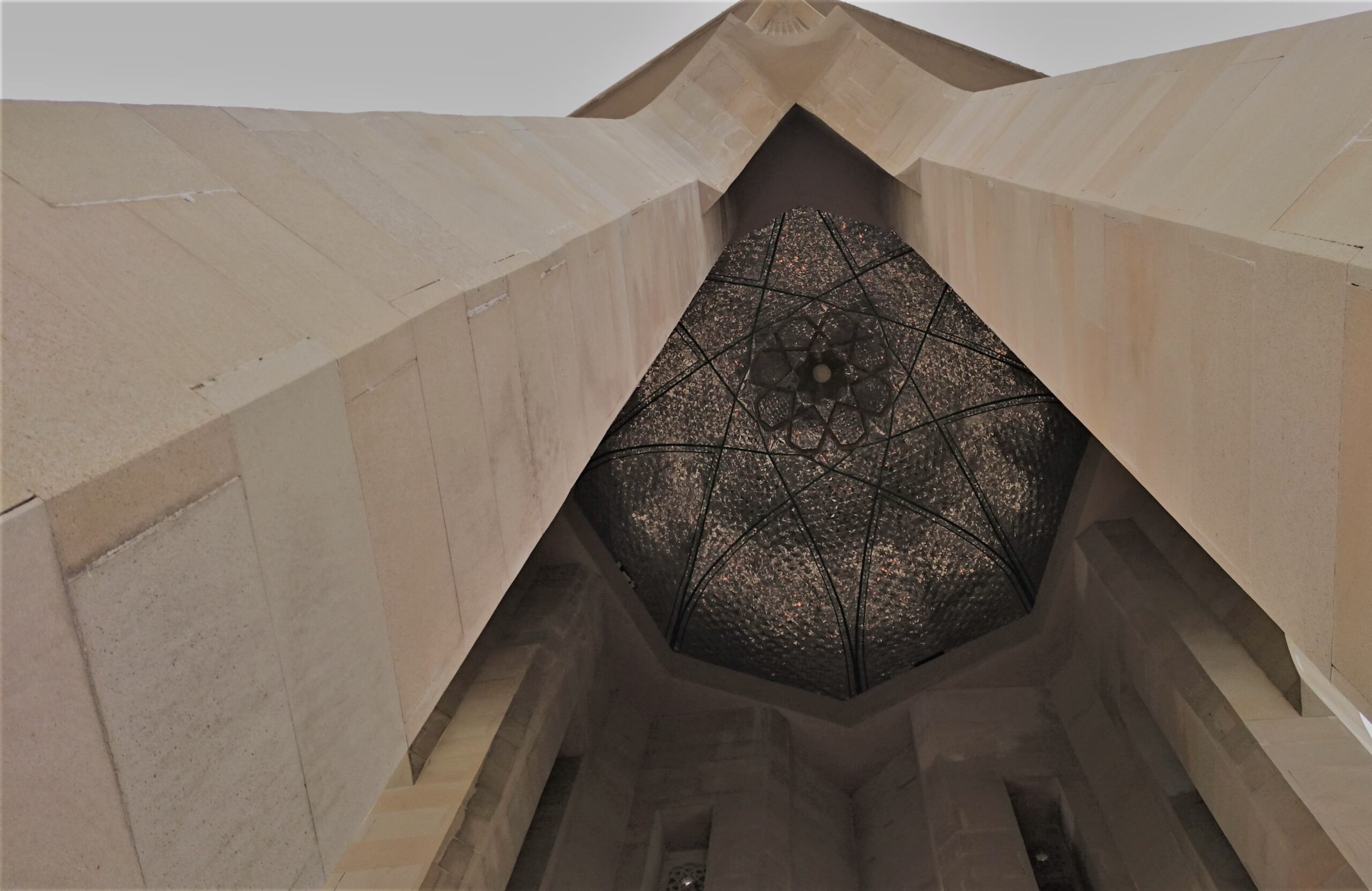
- Backpacker: Sahil Hostel & Hotel, Capital Hostel
- Budget: Shah Palace Hotel, Baku City Hotel, Winter Park Hotel
- Mid-range:
- High end: Hilton Baku, JW Marriott Absheron, Four Seasons Hotel
This section will be added shortly.
From the Airport to your accommodation
By Train
By Bus
To the Fire Temple
Bus 184 departs from Koroglu Metro Station. Return to this station after the temple and board bus 217 to Yanar Dag.
By Metro
Day 2
Visit the Fire Temple and Burning Mountain
Azer means ‘fire’ and is firmly associated with the Azerbaijan culture. From the early Zoroastrians to the flaming mountain at Yanar Dag and the current Flame Towers, Azerbaijan has deep cultural ties to fire. This day takes you across the entirety of the history behind, the Land of Fire. Join a tour, or take the metro or bus, all of which cost less than $3.
Visit Ateshgah Fire Temple and Yanar Dag, the blazing mountain, first thing in the morning. The Fire Temple has been around for thousands of years, and these ‘eternal flames’ have been revered by fire-worshippers across Azerbaijan’s history. The existing temple was constructed 500 years ago.

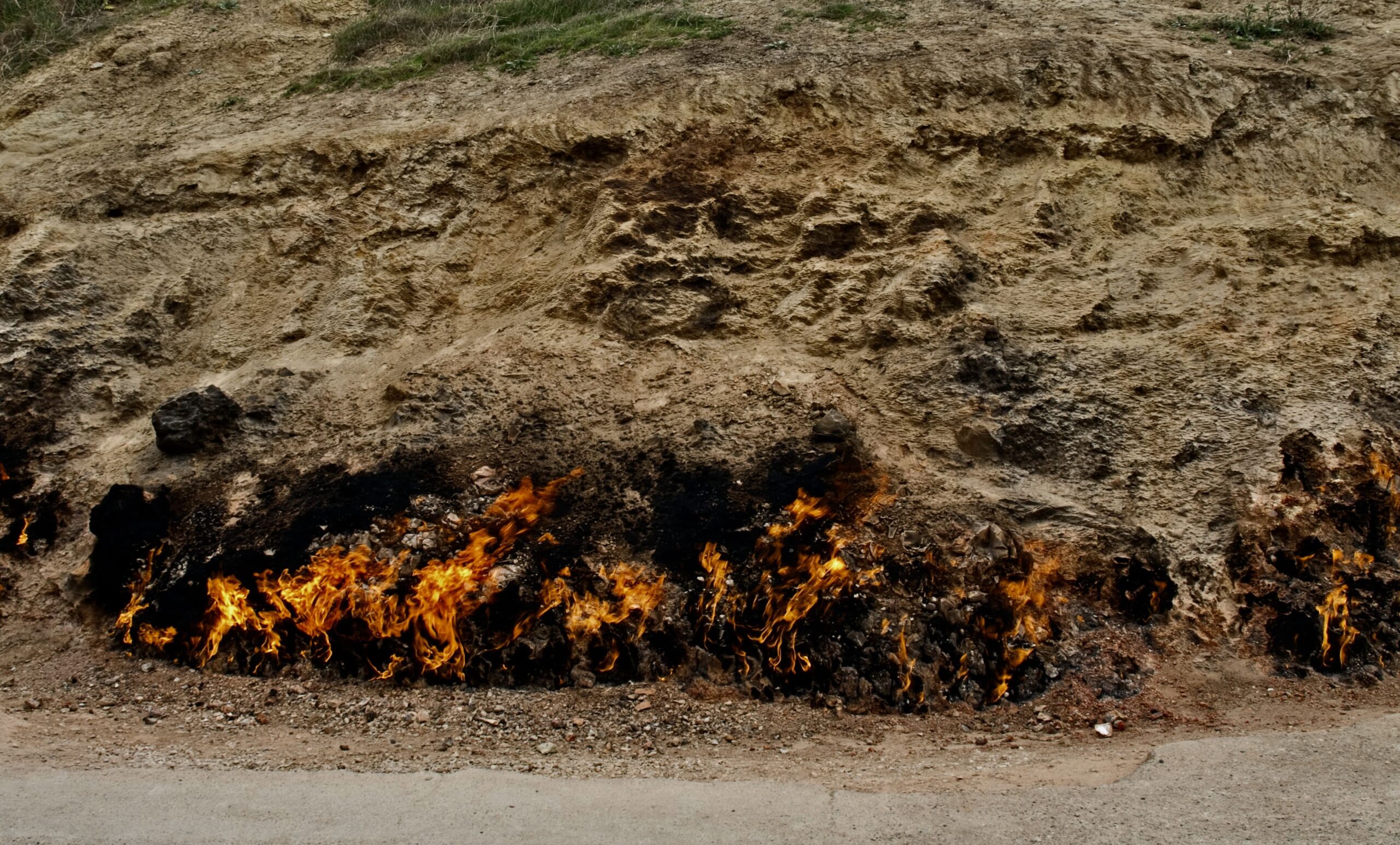
Yanar Dag is located in a rural Baku neighborhood that is both breathtaking and bizarre. Regardless of the sub-zero winter temperatures or the odd heavy downpour, a 10-meter-horizontal strip (33 feet) across the burnt mountain burns continually. Natural gas ignites and seeps from subsurface deposits.
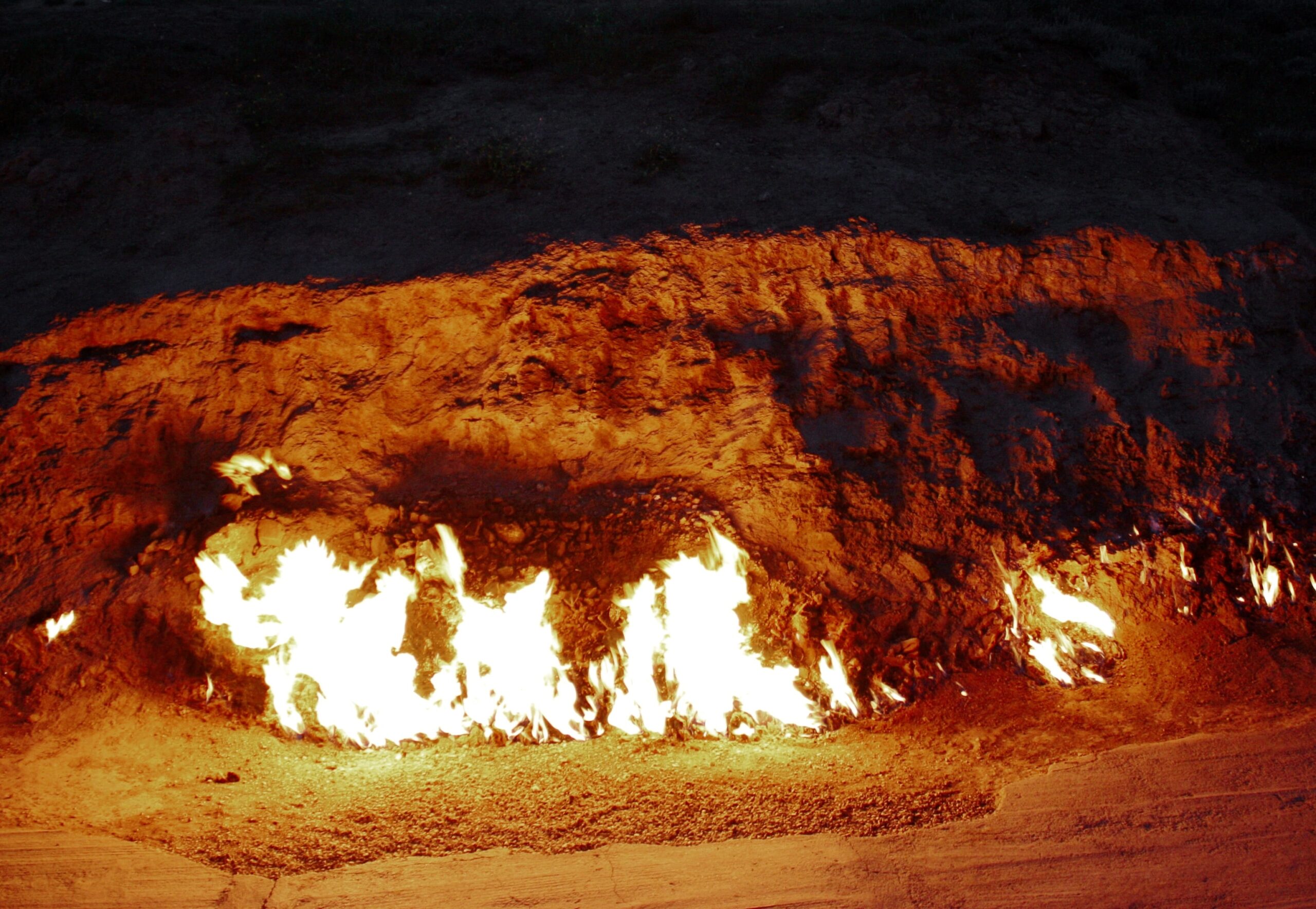
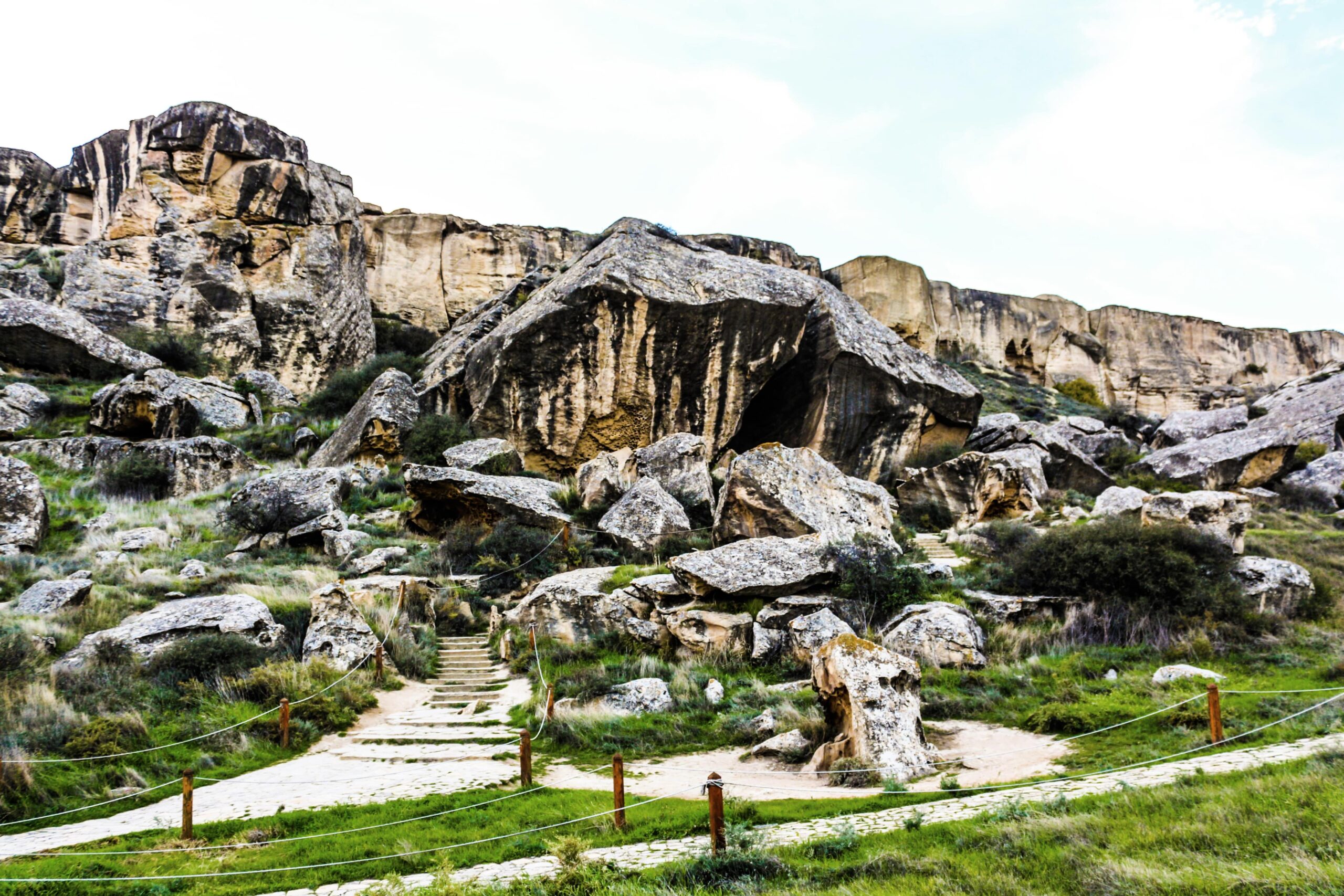

Day 3
Gobustan’s Petroglyphs and Mud Volcanoes
On day three, you’ll go to Gobustan (Qobustan) National Park and see the mud volcanoes. UNESCO Gobustan, located 60 kilometers (37.3 miles) southwest of Baku, features about 6000 rock sculptures, some of which are thought to be 40,000 years old. Inside, you’ll find Gaval Dash, a big rock that, when struck, sounds like a tambourine. There are also strange mud volcanoes nearby that spew frozen mud from subsurface gas sources.
Gobustan has outstanding universal value due to the quality and composition of its petroglyphs illustrations, the significant proof the set of ancient rock carvings provides for prehistoric hunting, fauna, flora, and lifestyles, and the ethnic consistency that the site conveys with both prehistoric and mediaeval periods.
The stone drawings are an interesting memorial to a bygone age because they depict the activities involved with hunting and fishing at an era when the climate and flora of the region was significantly warmer than they are now.
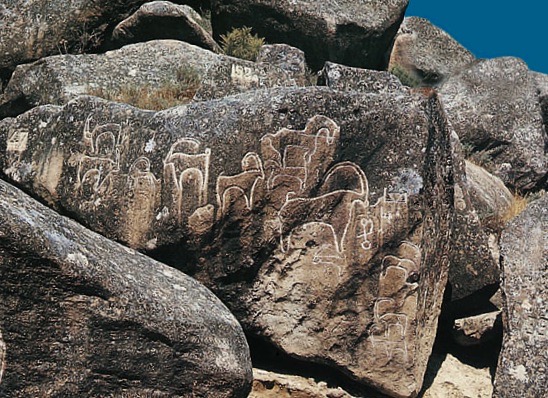
The Jinghirdag Mountain-Yazylytepe Hill and Kichikdash Mountain have the most distant and pristine scenery. These locations are guarded to maintain their authenticity. Boyukdash, the most frequented destination, features more disruptions in the form of installations such as a jail and a stone quarry.
Gobustan is definitely a must-see sight for any tourist visiting Azerbaijan.
Tours with an English-speaking guide start at $70 per person and run six hours. If you take the bus, first come to Baku's Field of 20 (20-Ci Saha) bus stop and then take bus 195 to Alat. Get off the train in Gobustan. On a piece of paper, write the name in Azeri and a request to stop here, and display it to the driver. They are unlikely to speak English. Take a cab or walk the 3 kilometers (1.9 miles) to the National Park from the bus stop. To go to the mud volcanoes, you'll need to take a cab.
Day 4
Head to Ganja
Visitors to Azerbaijan frequently visit Ganja, the country’s ancient second city. Ganja, which dates back to the 6th century and is the birthplace of the famed 12th-century poet Nizami Ganjavi, provides a look at medieval Azerbaijan before the richness of black gold.
Ganja, which has seen several conquests by foreign forces since the 9th century, has a variety of exquisite old buildings all around the city, one of the most renowned of which is the Shah Abbas Mosque, also known as the Juma Mosque by some (Friday Mosque)
There are several large magnificent constructions that are representative of various old European buildings. The Ganja State Philharmonic Hall, a concert hall named for the famed Ganja-born composer Fikret Amirov, can be found here.
Start by heading to the major plaza on Ataturk Avenue to have some food if you want. When you’re done, you may want to stroll around a little bit and get to know your surroundings.



If you have time on your hand you may want to visit The Imamzadeh Mosque which is one of the most beautiful buildings to witness. Ibrahim bin Muhammad Al Baqir is the son of the Shia sect’s fifth imam, a notable Sunni scholar, and a direct descendant of the prophet. His son Ibrahim’s tomb is said to be at this place, with numerous visitors coming to worship.
The Imamzadeh Complex is 7 kilometers north of Ganja City Center. The area consists of a mosque, a caravanserai, a cemetery with burial monuments, and, most notably, a mausoleum, all encircled by a red brick wall, a color that is used in almost all the buildings inside.

- Backpacker:
- Budget:
- Mid-range:
- Luxury:
This section will be updated shortly.
From Baku to Ganja
By Car
By Taxi
Lake Goygol
You can get to the lake by taxi, but it will only take you as far as the parking lot, after which you will have to walk the rest of the way.
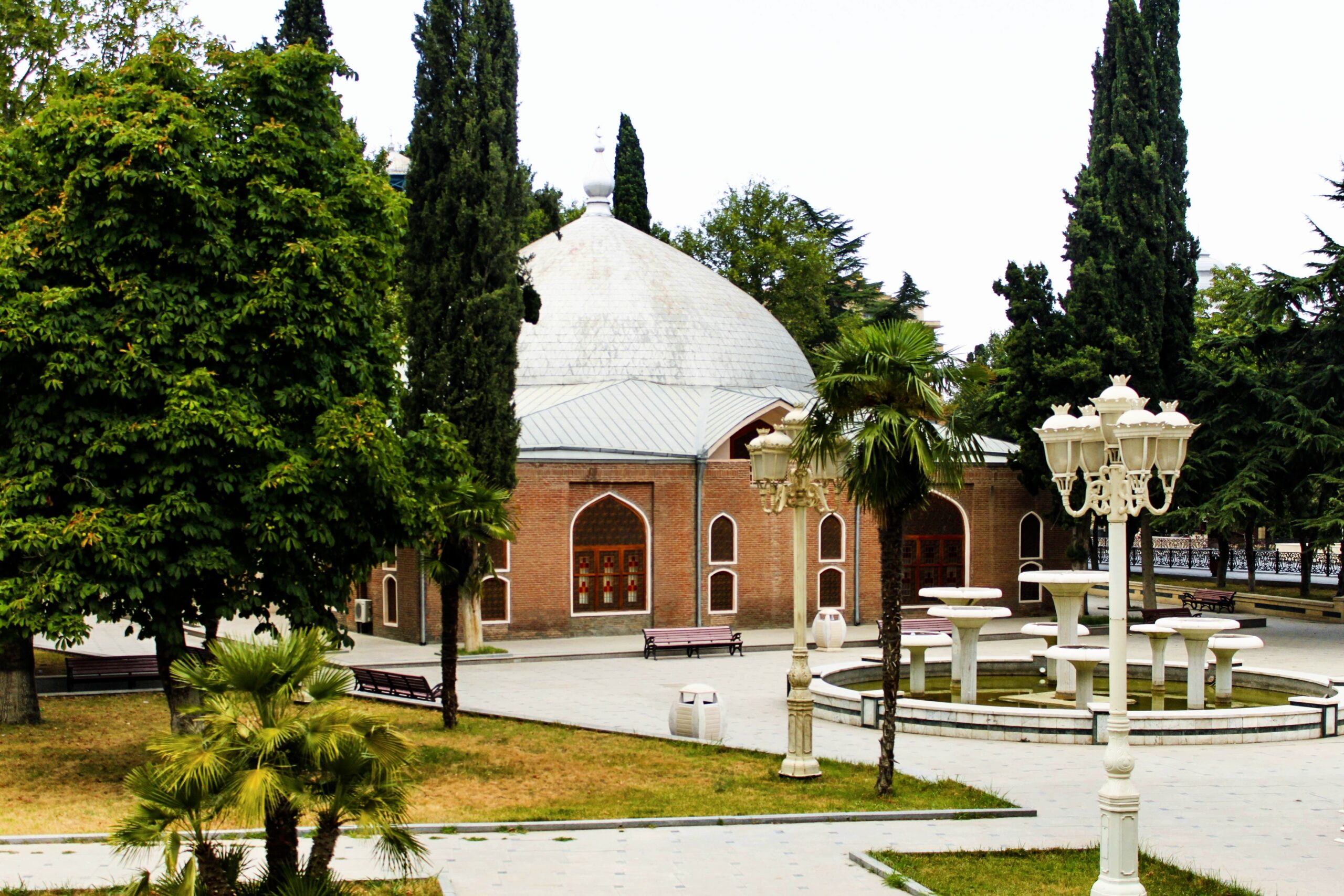


Day 5
Explore Ganja
Ganja’s main attractions include the Bottle House, the giant Tomb of Nizami, and the 15th-century Shah Abbas Mosque.
The Shah Abbas Mosque was built in the early 16th century by order of, Shah Abbas of course, the famous monarch of the Safavid dynasty that reigned over this region of the world, as well as Iran and other parts of the Caucasus in the 16th century.
The History and Ethnography Museum along Ataturk Avenue makes for an exciting stop for an hour, and the ruins of Shah Abbas caravanserai are on the square opposite. Walk along the pedestrian street, snap a few photographs, and head to the historical Khan Baghi Park.
Another place to consider going to is Lake Goygol, a mountainous lake surrounded by lush forest, which is 45 kilometers (30 miles) away and accessible on a half-day trip.
The lake is one of the eight big lakes around Ganja and is one of the most stunning sites in Azerbaijan. Afterward, head to the Heydar Aliyev Park on the outskirts of Ganja.
Day 6
Head to Sheki
The final stop is Sheki, a medieval mountain village near the Georgian border.
Sheki is a small but lovely medieval village on the historical Silk Road that will delight both your heart and your tummy. The city is well-known for its native food, sweets, and several magnificent remains of the once-thriving Silk Road.
Most visitors to Azerbaijan avoid Sheki, yet they lose out on the historical and natural attractions of the country. It would be a pity to travel all the way to Azerbaijan and not visit Sheki.
There is so much history and much more to see in Sheki. This part of Azerbaijan holds a significant historical importance.


The major attraction is the Sheki Khan’s Palace (Khansarai) from the 18th century, a caravanserai that originally housed Silk Road traders, and a complex of ancient baths.
The rich decoration of its exterior and interior with a Persian influence, from the brilliant mosaic panels to the magnificent handmade design seen on the facade, makes it one of the most attractive old structures in Azerbaijan. A pro tip is to search for the winter palace just around the corner from the main attraction, and it is a hidden gem!
Other attractions you shouldn’t miss are in the Sheki Fortress. There are several unique sights within the walls of Sheki Fortress that await your discovery. The Three Saints Church, a stunning round-shaped Caucasian Albanian Church that is not often seen, is one of the highlights. A local craft market inside shows the culture in handmade souvenirs and the Sheki Painting Gallery are amongst the few things you need not miss.
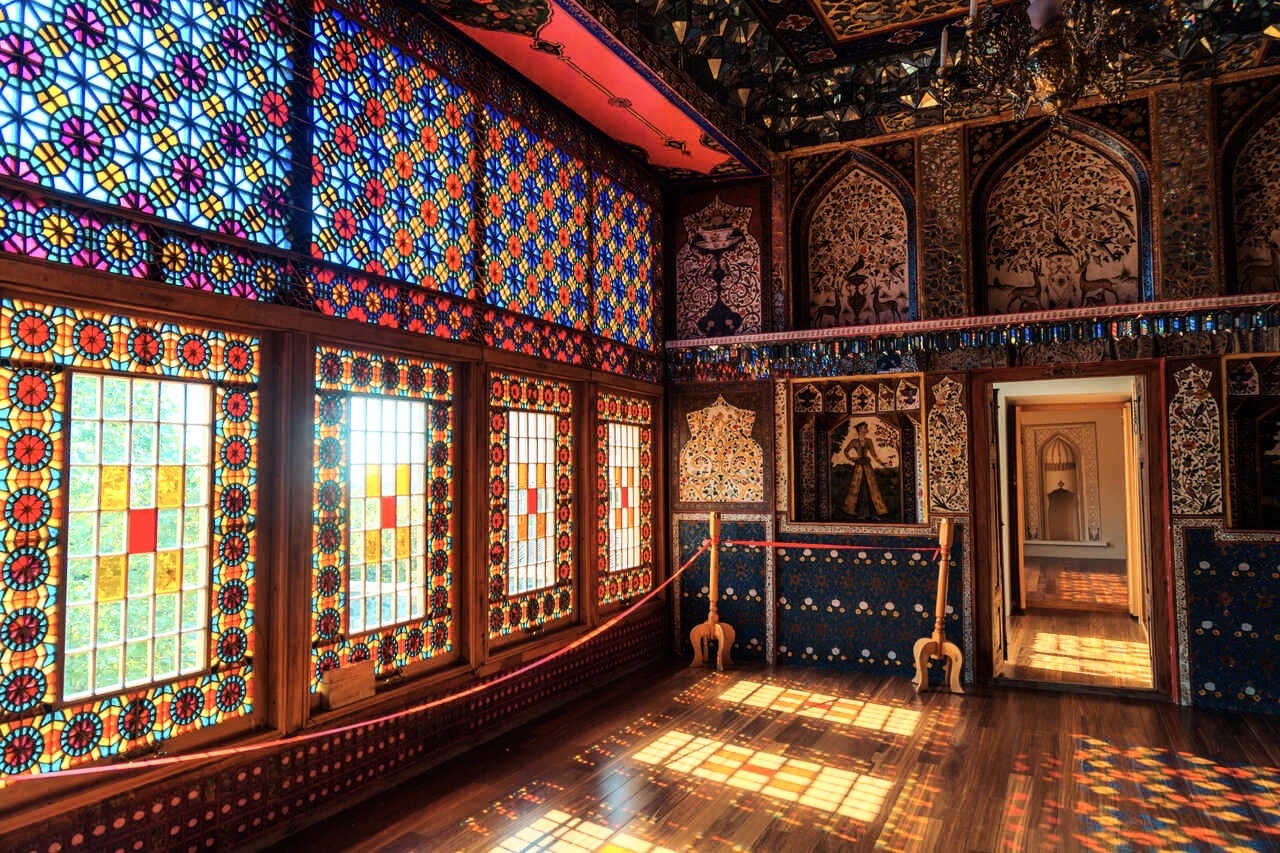
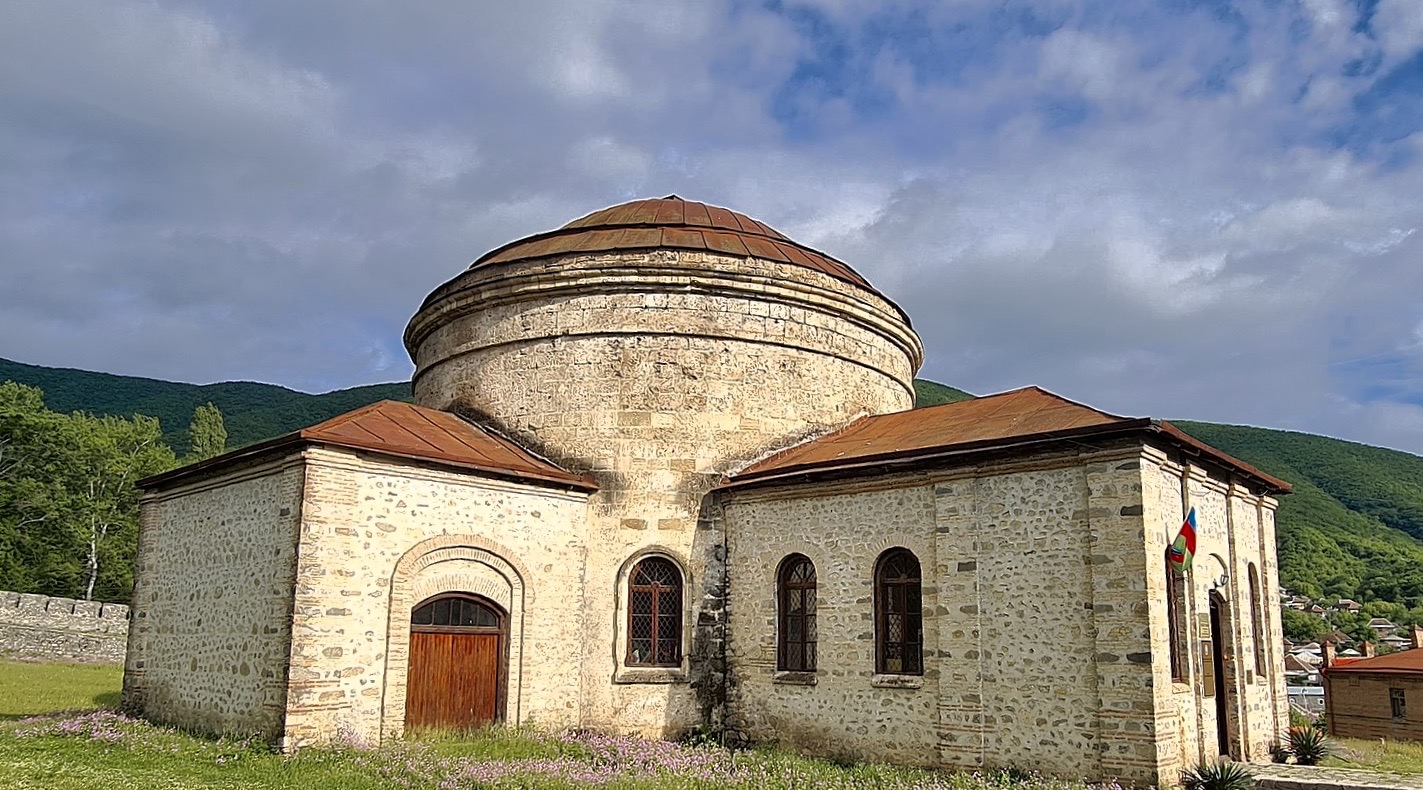
- Backpacker:
- Budget:
- Mid-range:
- Luxury:
This section will be updated shortly.
By Bus
Regular buses leave from Ganja and might take up to three hours depending on the weather.
By Car

Day 7
Final Day
Take one last stroll around Sheki’s streets, soaking in the heritage. Tourists visiting Azerbaijan frequently visit neighboring Georgia from Sheki. Take the bus from Sheki to Azerbaijan’s border town of Balakan if this is your route. Take a cab to the border, travel into Georgia, and then take another marshrutka (minibus) to Sighnaghi from adjacent Lagodekhi. Alternatively, take the six-hour bus ride from Sheki to Baku, and head to the airport.
The Most Popular Food in Azerbaijan
Azerbaijani cuisine was influenced by culinary traditions from several nations, including Turkic, Iranian, and Eastern European. The country’s climatic zone variety is impressive for its size. In reality, Azerbaijan has nine of the world’s eleven climatic zones. This makes the ground extremely fertile, making the nation ideal for crop cultivation. Azerbaijan’s diet is substantially healthier than that of many other countries throughout the world.
When it comes to hospitality, Azerbaijanis take it extremely seriously, therefore declining meals might be considered disrespectful, even if you’re full.

Plov
Plov is one of Azerbaijan’s most well-known foods. A rice-based meal that may be paired with a variety of tasty ingredients. Azerbaijanis like steaming long grain rice with saffron, which imparts a pleasant fragrant flavor. The rice is then topped with a layer of golden crust, known as gazmag. The ingredients for gazmag include flour, butter, eggs, and yogurt.

Saj Ichi
Many Azerbaijani dishes are still produced using traditional cooking methods. Azerbaijan’s version of barbeque is saj ichi. Lamb has always been the meat of choice in the country for ages. This delectable meal goes well with Ayran, a wonderfully refreshing and healthful beverage comprised of water, yogurt, and salt.

Bozbash
Kufta bozbash is a popular Azerbaijani national soup. Boiled meatballs are tossed in a flavorful soup of peas, potatoes, and mutton bones. Meatballs are frequently flavored with dried or fresh cherries. In Baku, bozbash is often made with peas, meatballs, and potatoes simmered in a saffron and turmeric broth.
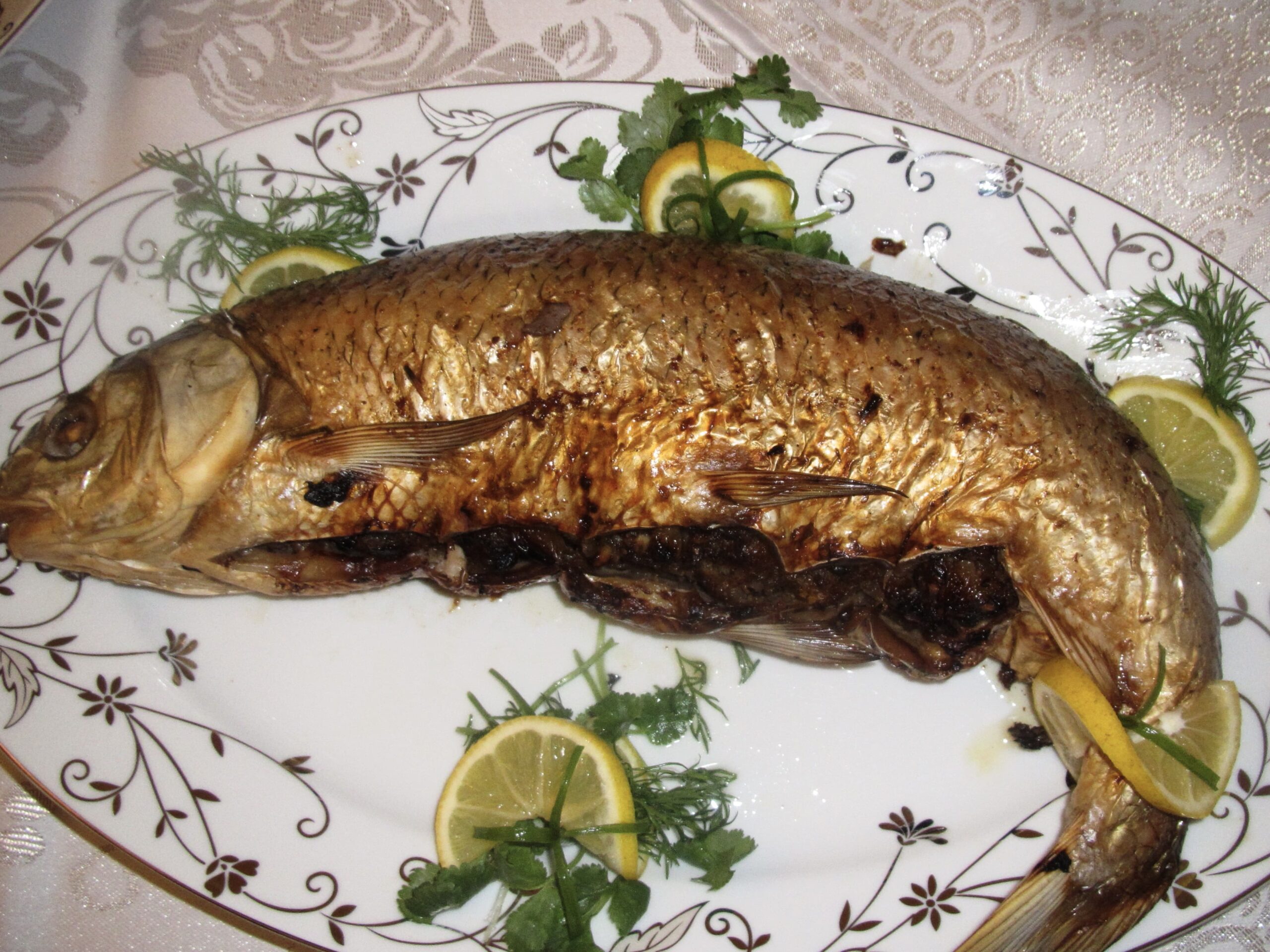
Lavangi
Lavangi is a delicious Azerbaijani dish with a range of tastes from the numerous meats that can be used, as well as a variety of fruits and spices. Fresh and delectable kutum, asp, or carp from the Caspian Sea are used in fish-based lavangi. White fish is another option, and caviar is a favorite filling. Stuffing alternatives include dried cherry plums, raisins, sour prunes, or “narsharab” (pomegranate syrup).

Dushbara
Dushbara are mini dough dumplings cooked in broth and filled with minced meat and spices. In Azerbaijan, they are small and delicate. People in Baku frequently compete to see who can put the most dushbara onto the spoon! Many nations have similar popular cuisine.
What's the Travel Budget for Azerbaijan?
Flights
- Flights start at roughly $90 from nearby countries. Tickets however on average cost around $900 and can cost more depending on which class and from which country you depart from.
Accommodation
- Nomad Backpacking style travelers can expect to spend around $100 for a week
- Budget travelers can expect to spend around $170 for a week
- Mid-range travelers can expect to spend around $350 for a week
- Luxury travelers can expect to spend around $1500 for a week
Food Budget (Three meals and drinks)
- Nomad Backpacking style travelers can expect to spend around $12 per person per day
- Budget travelers can expect to pay around $20 per person per day
- Mid-range travelers on average would cost $25 to $35 per person per day
- Luxury travelers can expect to pay around $40 to $60 per person per day
Overall Budget Styles (Not including Flights, Tours, Transportation, or Car Rental)
- Nomad Backpacking style travelers can expect to spend around $230 for a week
- Budget travelers can expect to spend around $350 for one person for a week
- Mid-range travelers can expect to spend around $650 for one person for a week
- Luxury travelers can expect to spend around $1850 for one person for a week
Flights
- Flights start at roughly $90 from nearby countries. Tickets however on average cost around $900 and can cost more depending on which class and from which country you depart from.
Accommodation
- Nomad Backpacking style travelers can expect to spend around $100 for a week
- Budget travelers can expect to spend around $170 for a week
- Mid-range travelers can expect to spend around $350 for a week
- Luxury travelers can expect to spend around $1500 for a week
Food Budget (Three meals and drinks)
- Nomad Backpacking style travelers can expect to spend around $12 per person per day
- Budget travelers can expect to pay around $20 per person per day
- Mid-range travelers on average would cost $25 to $35 per person per day
- Luxury travelers can expect to pay around $40 to $60 per person per day
Overall Budget Styles (Not including Flights, Tours, Transportation, or Car Rental)
- Nomad Backpacking style travelers can expect to spend around $230 for a week
- Budget travelers can expect to spend around $350 for one person for a week
- Mid-range travelers can expect to spend around $650 for one person for a week
- Luxury travelers can expect to spend around $1850 for one person for a week
Flights
- Flights start at roughly $90 from nearby countries. Tickets however on average cost around $900 and can cost more depending on which class and from which country you depart from.
Accommodation
- Nomad Backpacking style travelers can expect to spend around $100 for a week
- Budget travelers can expect to spend around $170 for a week
- Mid-range travelers can expect to spend around $350 for a week
- Luxury travelers can expect to spend around $1500 for a week
Food Budget (Three meals and drinks)
- Nomad Backpacking style travelers can expect to spend around $12 per person per day
- Budget travelers can expect to pay around $20 per person per day
- Mid-range travelers on average would cost $25 to $35 per person per day
- Luxury travelers can expect to pay around $40 to $60 per person per day
Overall Budget Styles (Not including Flights, Tours, Transportation, or Car Rental)
- Nomad Backpacking style travelers can expect to spend around $230 for a week
- Budget travelers can expect to spend around $350 for one person for a week
- Mid-range travelers can expect to spend around $650 for one person for a week
- Luxury travelers can expect to spend around $1850 for one person for a week
Flights
- Flights start at roughly $90 from nearby countries. Tickets however on average cost around $900 and can cost more depending on which class and from which country you depart from.
Accommodation
- Nomad Backpacking style travelers can expect to spend around $100 for a week
- Budget travelers can expect to spend around $170 for a week
- Mid-range travelers can expect to spend around $350 for a week
- Luxury travelers can expect to spend around $1500 for a week
Food Budget (Three meals and drinks)
- Nomad Backpacking style travelers can expect to spend around $12 per person per day
- Budget travelers can expect to pay around $20 per person per day
- Mid-range travelers on average would cost $25 to $35 per person per day
- Luxury travelers can expect to pay around $40 to $60 per person per day
Overall Budget Styles (Not including Flights, Tours, Transportation, or Car Rental)
- Nomad Backpacking style travelers can expect to spend around $230 for a week
- Budget travelers can expect to spend around $350 for one person for a week
- Mid-range travelers can expect to spend around $650 for one person for a week
- Luxury travelers can expect to spend around $1850 for one person for a week
If you want to know what to pack, read this list below:
- This is a conservative country that can get extremely cold, dress accordingly
- Raincoat or Light Waterproof Jacket
- Hiking Boots or Sturdy Sneakers (Shoes You Don’t Mind Getting Wet)
- Sunscreen
- Insect Protection – Repellent and Clothing
- Sunglasses and Sun Hat
- Water Shoes
- Beach Towels/Sarong
- Dry Bag
- Money Belt or Cross Bag
- Portable Medical Kit
- Flashlight or Headlamp
- Copies of your passport.
- Get all the needed vaccinations before traveling
- A power bank is a must in any travel.
- Always have some cash with you just in case there are no ATMs and if you are dealing with a business that solely accepts cash
- Get yourself an adapter for your gadgets
- 1 toothbrush
- 1 tube of toothpaste
- 1 razor
- 1 package of dental floss
- 1 small bottle of shampoo
- 1 small bottle of shower gel
- 1 towel
- Deodorant
- Band-Aids
- Hydrocortisone cream
- Antibacterial cream
- Earplugs
- Tylenol
- Hand sanitizer (germs = sick = bad holiday)
- A key or combination lock
- Zip-lock bags
- Plastic bags (great for laundry)
- Universal charger/adaptor
- LifeStraw (A water bottle with a purifier)
- 1 dry shampoo spray & talc powder
- 1 hairbrush
- Makeup you use
- Hairbands & hair clips
- Feminine hygiene products
Clothing For Boys
- 1 pair of jeans or khaki pants
- 1 pair of shorts
- 1 bathing suit
- 5 T-shirts
- 1 long-sleeved T-shirt
- 1 pair of flip-flops
- 1 pair of sneakers
- 6 pairs of socks
- 5 pairs of boxer shorts
Clothing For Girls
- 1 swimsuit
- 1 sarong
- 1 pair of stretchy jeans
- 1 pair of leggings
- 2-3 long-sleeve tops
- 2-3 T-shirts
- 3-4 spaghetti tops
- 1 light cardigan
Want to plan your own trip, here are some of the best resources that can help you
- Skyscanner – They search small websites and budget airlines that larger search sites tend to miss. They are hands down the number one place to start.
- Momondo – This is another favorite flight search engine because they search such a wide variety of sites and airlines. Always check here too.
- Booking.com – The best all-around booking site that constantly provides the most affordable and lowest rates. They have the widest selection of budget accommodation.
- Couchsurfing – This website allows you to stay on people’s couches or spare rooms for free. It’s a great way to save money while meeting locals who can tell you the ins and outs of their city. The site also lists events you can attend to meet people (even if you’re not staying with someone).
- Intrepid Travel – If you want to do group tours, go with Intrepid. They offer good small group tours that use local operators and leave a small environmental footprint.
- Grassroots Volunteering – For volunteering, Grassroots Volunteering compiles a list of good local volunteer organizations that keep the money within the community.
- Get Your Guide – Get Your Guide is a huge online marketplace for tours and excursions. They have tons of tour options available in cities all around the world, including everything from cooking classes, walking tours, street art lessons, and more! It has the world’s largest collection of things to do with more than 30,000 activities in 7500 destinations.
- SafetyWing – Safety Wing offers convenient and affordable plans tailored to digital nomads and long-term travelers. They have cheap monthly plans, great customer service, and an easy-to-use claims process that makes it perfect for those on the road.
- Trip Advisor: Check the reviews and then book your accommodation. TripAdvisor is where you go when you want to compare prices with multiple accommodation providers.
- VRBO: is the main search engine to use when you are looking for a home or apartment rental. It can sometimes be cheaper than hotels and it is the best way to stay in areas that offer a more local feel.
- Hostelworld: With one of the largest databases of hostels in the world, Hostelworld is the go-to site when you are looking for budget accommodation.
- Rome 2 Rio: If you want to see how to get somewhere by plane, train, bus, ferry, or car Rome2Rio lays it all out for you as well as related costs.
- World Nomads Insurance: When traveling you should always have travel insurance. We have found the best bang for your buck is by far World Nomads.
Final Thoughts on Azerbaijan
Azerbaijan’s former history has its roots in everything around the country, making it a vibrant, and beautiful land that is worth traveling to. From breathtaking natural beauty to man-made wonders of art and architecture. A great thing about this Asian gem is that it changes completely from season to season; you could return year after year to see the changing scenery and diverse activities on offer! Would you?
If you’ve been to Azerbaijan let us know how your trip was in the comments below.